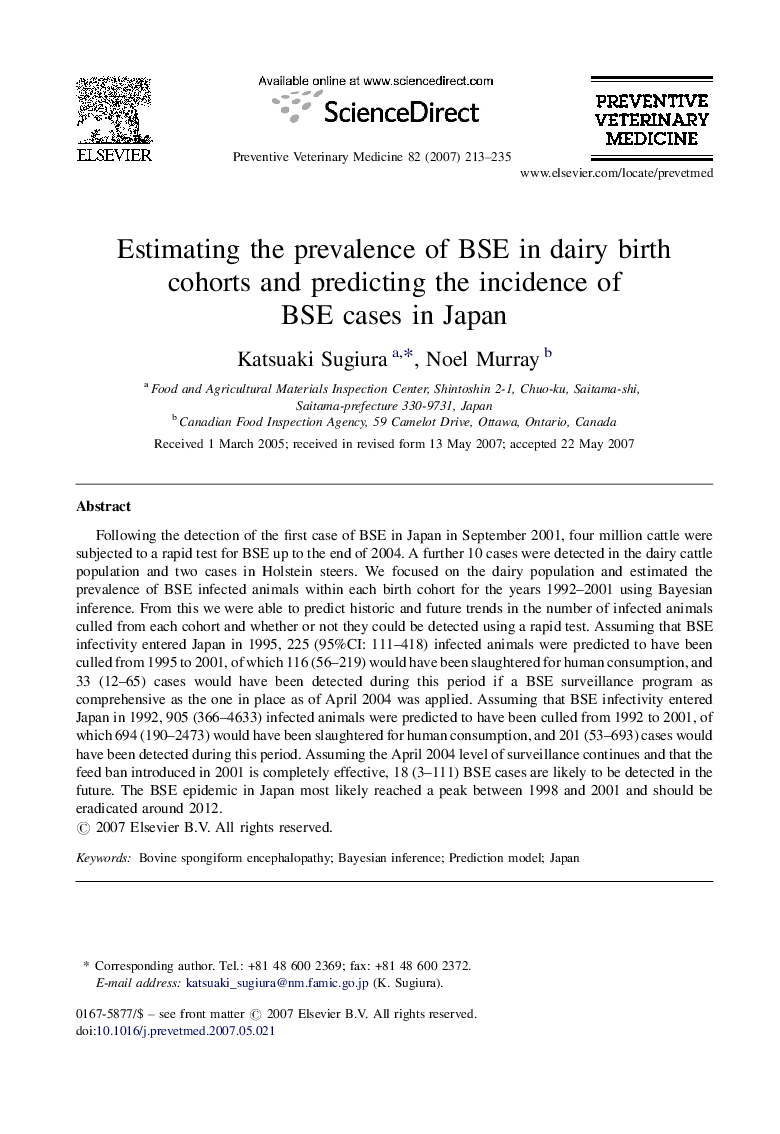| Article ID | Journal | Published Year | Pages | File Type |
|---|---|---|---|---|
| 2453437 | Preventive Veterinary Medicine | 2007 | 23 Pages |
Following the detection of the first case of BSE in Japan in September 2001, four million cattle were subjected to a rapid test for BSE up to the end of 2004. A further 10 cases were detected in the dairy cattle population and two cases in Holstein steers. We focused on the dairy population and estimated the prevalence of BSE infected animals within each birth cohort for the years 1992–2001 using Bayesian inference. From this we were able to predict historic and future trends in the number of infected animals culled from each cohort and whether or not they could be detected using a rapid test. Assuming that BSE infectivity entered Japan in 1995, 225 (95%CI: 111–418) infected animals were predicted to have been culled from 1995 to 2001, of which 116 (56–219) would have been slaughtered for human consumption, and 33 (12–65) cases would have been detected during this period if a BSE surveillance program as comprehensive as the one in place as of April 2004 was applied. Assuming that BSE infectivity entered Japan in 1992, 905 (366–4633) infected animals were predicted to have been culled from 1992 to 2001, of which 694 (190–2473) would have been slaughtered for human consumption, and 201 (53–693) cases would have been detected during this period. Assuming the April 2004 level of surveillance continues and that the feed ban introduced in 2001 is completely effective, 18 (3–111) BSE cases are likely to be detected in the future. The BSE epidemic in Japan most likely reached a peak between 1998 and 2001 and should be eradicated around 2012.
